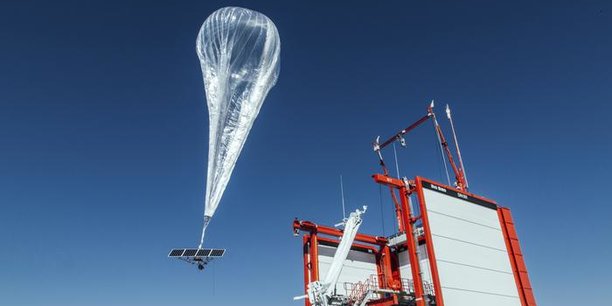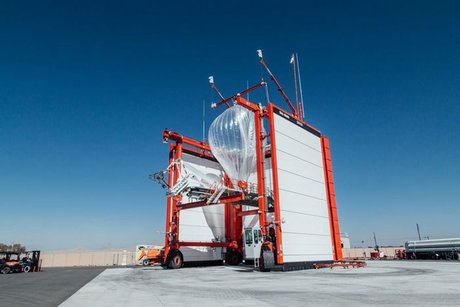
[ad_1]
Fleet of Balloons
In the long run, the goal of the Loon Project is to launch and maintain a fleet of balloons to provide ground users with Internet coverage. X has designed automatic launchers capable of safely and regularly projecting a new balloon every 30 minutes. Since the beginning of the project, test flights have traveled more than 25 million kilometers to date. The record is held by a balloon that held for 190 days in the stratosphere.

A Loon balloon is about to take flight to Puerto Rico from a Nevada-based launch site. (Credits, project Loon)
They evolve about 20 km above the surface of the Earth, in the stratosphere, well above meteorological phenomena, fauna and planes. To bring balloons where they want them, Project Loon teams use modeled wind predictions and decision-making algorithms to move each balloon up and down in the right-wind layer. By moving with the wind, balloons can provide coverage where needed.
> Transmitters transmit connectivity from ground stations, between balloons and to users' phones.
> The solar panels power the equipment during the day and charge an integrated battery for night operation.
> The parachute [19659007] deploys automatically at the end of the flight of a balloon for a safe descent to the Earth.
> The flight capsule ] contains the central control system of the Loon balloon

A balloon en route to Puerto Rico. (Credits, project Loon)
4 billion potential users
The broadband Internet connection is transmitted to the nearest balloon via a ground-based telecommunication partner, in this case Telkom Kenya for this first launch. It is relayed on the network of balloons, then redirected to users on the ground. Company X has proven the possibility of data transmission between balloons separated by more than 100 km in the stratosphere, as well as the retransmission of this data to people on the ground with connection speeds of up to 10 Mbit / s s, directly on their LTE phone
For the giants of the Web, the 4 billion humans still deprived of the internet represent a wealth of customers. With its Aquila drone project, Facebook had also tried to connect remote areas. But the firm eventually abandoned the project to focus on distribution software.
Kenya is already, to date, one of the best connected countries in Africa with an Internet penetration rate close to 77%, according to the National Communications Authority. But in the mountains, at more than 5,000 meters above sea level, there are still many white areas. The contract, greeted enthusiastically by many telephone operators, also raises concerns. In particular the fear of the establishment of a monopoly, which Google has the secret. If prices are too high for using Loon technology, users will not have competitors to turn to. A real problem in Africa, where 1 GB of mobile data returns on average 18% of the monthly income of the continent.
Source link